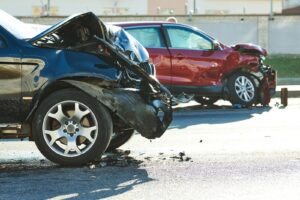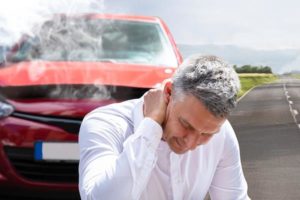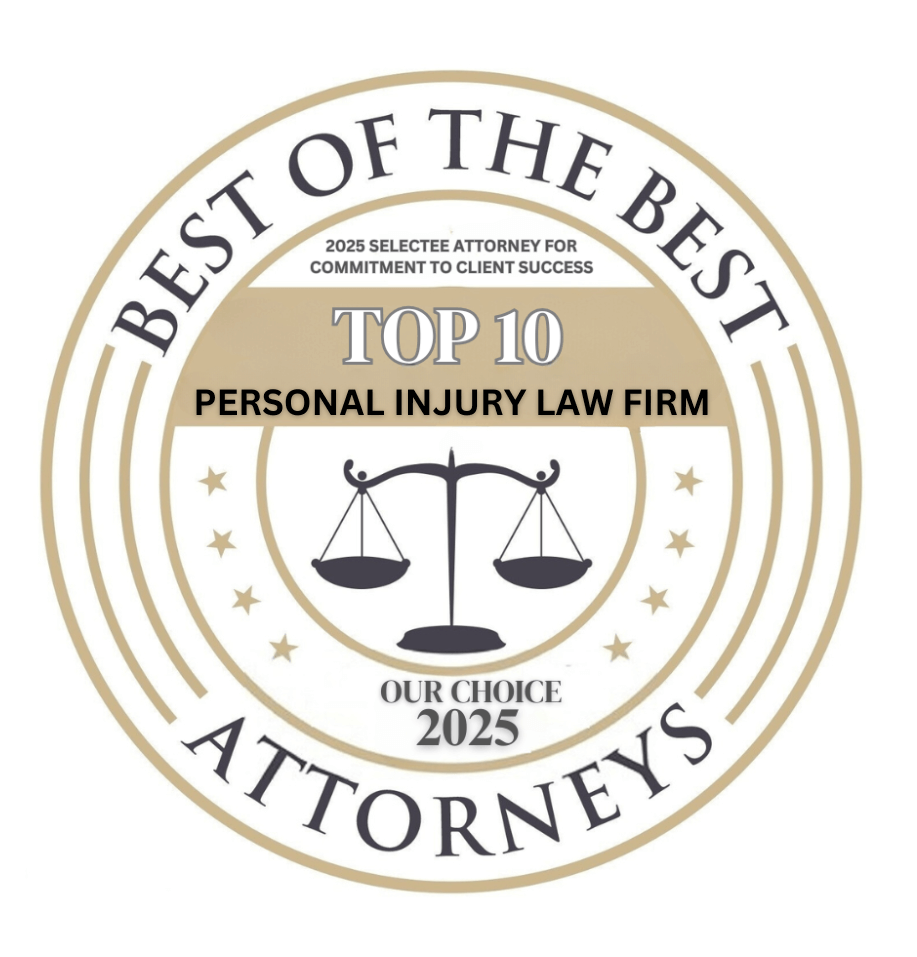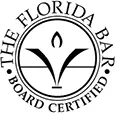The Basics of Rear-End Collisions
Rear-end collisions are among the most common forms of traffic accidents. They are also less likely to result in fatalities. However, just because these accidents happen frequently doesn’t mean they’re not serious.
Even if the fatality rate for rear-end car accidents is lower than that in other accidents, you can still suffer debilitating injuries. The particular danger is that these injuries are not always apparent at the accident scene and can grow worse over time.
If you have suffered an injury in a rear-end car accident, you should contact an experienced car accident lawyer to discuss your legal options. In the meantime, here is what you need to know about rear-end car crashes.
Table of Contents
Proving Liability in a Rear-End Accident
Usually, the driver of the rear car which strikes the front vehicle is the one who is presumed to be at fault for the accident. This rule is not exactly ironclad, but it does apply in most cases. The rear driver is the one who should have spotted the car in front of them and applied the brakes in time. Without evidence to the contrary, this rule is the one that determines liability. If you are the front driver, there is a solid chance that you will receive a settlement check if a car strikes you in a rear-end collision.
If you were the rear car driver and wanted to prove that the front car driver was at fault, you will need convincing evidence to overcome the presumption that you were at fault. You should still speak to a lawyer to see whether you can recover any financial compensation, even though it may be an uphill battle. However, you can prove that the other driver cut you off or stopped short in front of you. You can prove that the front driver was partially to blame.
Here are some of the other ways that you can show that the front car driver should be liable for the accident:
- They drove unreasonably slowly in front of you
- Their brake light was not working, and you did not know that they were slowing down
- The driver did not pull off the road when they had a mechanical problem and show have
- The front driver was tailgating a car in front of them and had to stop short with little warning
In some cases, the front car driver may intentionally do something wrong because they want a settlement check from the insurance company. However, it may be challenging to prove that in court or when dealing with insurance companies applying the same rule since the automobile’s beginning.
However, you should always at least try to talk to a lawyer about your case. It will cost you nothing to have a free consultation. The worst thing that can happen is that an attorney may tell you do not have a strong case. It will cost you nothing out of pocket to learn that.
Rear-End Car Accidents Are on the Rise
The underlying conditions leading to rear-end car accidents are worsening throughout the country. Heavy traffic and distracted driving are the two most significant factors in rear-end car crashes.
 These days, distracted driving has become a nationwide scourge as drivers cannot put down their phones, even behind the wheel. The rear car driver may be looking down at their phone or away at something else, and they may not see the car in front of them. The crash might be even more severe if the rear car driver made little effort to brake.
These days, distracted driving has become a nationwide scourge as drivers cannot put down their phones, even behind the wheel. The rear car driver may be looking down at their phone or away at something else, and they may not see the car in front of them. The crash might be even more severe if the rear car driver made little effort to brake.
In addition, roads have become much more crowded as the population in the area has experienced significant growth.
Some of the top cities for traffic congestion in recent years include:
- Los Angeles
- New York City
- San Francisco
- San Jose
- Seattle
- Miami
- Washington, D.C.
- Chicago
- Austin
- Tampa
More traffic on the road means a greater chance of a slower car in front that the rear driver does not see in time for whatever reason. Even with slower-moving traffic during rush hours, drivers still manage to cause rear-end accidents that result in serious injuries and property damage.
Governments have started spending more money on fixing dilapidated infrastructure and highways. While this might eventually result in road improvements, it also means more construction for many months – or years – to come. More work zones mean more areas on the road where a car may need to stop short. Many rear-end accidents occur when a car makes a sudden slowdown at the beginning of work zones.
Finally, worsening inflation means many drivers may be cutting corners to keep their cars on the road. They may get sticker shock when they price out routine maintenance, such as brake repairs. Delaying critical maintenance increases the chances that the car cannot brake in time to avoid a rear-end car accident.
Common Causes of Rear-End Collisions
Several factors can contribute to rear-end accidents. Here are some common causes:
- Distracted Driving: One of the leading causes of rear-end collisions is distracted driving. Activities such as texting, talking on the phone, eating, or adjusting the radio divert a driver’s attention from the road.
- Tailgating: Following too closely behind another vehicle doesn’t allow for enough reaction time. If the leading vehicle suddenly slows down or stops, the following vehicle may not have sufficient space to avoid a collision.
- Speeding: Driving at high speeds reduces reaction time. A driver traveling too fast may not be able to stop in time if the vehicle in front slows down or stops suddenly.
- Aggressive Driving: Aggressive behaviors like weaving in and out of traffic, frequent lane changes, and aggressive acceleration or braking can increase the likelihood of rear-end collisions.
- Weather Conditions: Poor weather conditions, such as rain, snow, or fog, can reduce visibility and make roads slippery. Drivers may not be able to stop in time due to reduced traction.
- Faulty Brake Systems: Malfunctioning or poorly maintained brakes can lead to difficulty in stopping, increasing the risk of a rear-end collision.
- Driver Fatigue: Fatigued drivers are more likely to have slower reaction times and impaired judgment, making them susceptible to rear-end collisions.
- Sudden Stops: A driver stopping suddenly without warning, for instance, to avoid an obstacle, can catch the following driver off guard, leading to a rear-end collision.
- Inexperienced Drivers: Inexperienced drivers may struggle with judging distances and reaction times, increasing the likelihood of rear-end collisions.
- Failure to Yield: If a driver fails to yield the right of way when required, it can result in a rear-end collision, especially at intersections or when merging onto highways.
To reduce the risk of rear-end collisions, it’s important for drivers to stay focused, maintain a safe following distance, obey speed limits, and adapt their driving to weather and road conditions.
Common Injuries in Rear-End Car Accidents
Rear-end car accidents account for 29 percent of car crashes nationally. However, rear-end accidents are not likely to be fatal, accounting for only a tiny fraction of car accident deaths. Usually, the rear car driver may end up more badly injured because the front of their car is involved in the accident. The airbag will likely deploy for the rear car driver, and there is more of a chance that their body can suffer direct impact.
Still, the front car driver is also at risk of serious injury. Even though rear-end crashes occur at a lower rate of speed, the physics of the accident can still mean a significant impact on the front car driver. When the rear car travels faster, the crash will unleash a tremendous amount of force.
The most common injury the front car driver will suffer in a rear-end crash is whiplash. Even when their body is still, their head may snap forward, causing various injuries.
Whiplash Is a Potentially Serious Injury
 Do not let the name fool you – whiplash can be a severe injury that can have lifelong effects. No matter how much the insurance company tries to minimize the severity of the injury (and they will almost always try to), whiplash can cause tremendous pain and discomfort.
Do not let the name fool you – whiplash can be a severe injury that can have lifelong effects. No matter how much the insurance company tries to minimize the severity of the injury (and they will almost always try to), whiplash can cause tremendous pain and discomfort.
Whiplash will commonly cause neck and back injuries that can include:
- Neck pain and stiffness
- Shoulder pain
- Back pain
- Numbness or pain in your arms and hands
Some estimates are that up to 40 percent of people who suffer whiplash will never fully recover from it. Others may need surgical intervention or extensive therapy to recover as much as possible.
Besides neck and back injuries, one can suffer a traumatic brain injury from whiplash. When the head snaps forward, the brain can crash against the skull. The impact can cause anything from a concussion to a permanent brain injury.
Whiplash injuries are not always apparent right after the accident. It may take days or weeks for a patient’s symptoms to show up. Meanwhile, they may grow worse without treatment. If you have suffered a rear-end car accident, you should exercise caution and get yourself checked out medically as soon as possible.
Other Rear-End Accident Injuries
Along with whiplash, rear-end car accidents can result in other injuries. The type and severity of injuries depend on factors such as the speed of the collision, the size of the vehicles involved, and whether occupants were wearing seat belts. Common injuries in rear-end car accidents include:
- Soft Tissue Injuries: Soft tissues, including muscles, tendons, and ligaments, can be injured due to the sudden jolt of a rear-end collision. This can lead to sprains, strains, and contusions.
- Back Injuries: The force of impact in a rear-end collision can cause back injuries, such as herniated discs, fractures, and spinal cord injuries.
- Head Injuries: Even with airbags, occupants can experience head injuries from the impact. Concussions, contusions, and more severe traumatic brain injuries may occur.
- Chest Injuries: Chest injuries can result from the impact of the seat belt or steering wheel. Bruising, fractures, or injuries to internal organs may occur.
- Knee and Leg Injuries: The lower extremities can be injured when they impact the dashboard, door, or other parts of the vehicle. Fractures, dislocations, and soft tissue injuries are possible.
- Facial Injuries: In a collision, occupants may strike the dashboard, steering wheel, or airbag, leading to facial injuries such as cuts, bruises, or fractures.
- Internal Injuries: The force of impact can cause internal injuries, such as organ damage or internal bleeding. These injuries may not always be immediately apparent.
- Seat Belt Injuries: While seat belts are crucial for safety, they can also cause injuries in high-impact collisions, including bruises, chest contusions, or shoulder injuries.
- Psychological Injuries: Beyond physical injuries, individuals involved in a rear-end collision may experience psychological trauma, including anxiety, post-traumatic stress disorder (PTSD), or depression.
It’s important to seek medical attention promptly after a rear-end collision, even if injuries seem minor initially. Some injuries may not manifest symptoms immediately, and early intervention can improve outcomes. Additionally, documenting injuries and seeking legal advice if the accident was caused by another party’s negligence can be important for potential compensation.
You May Find a Skeptical Insurance Company
Insurance companies are naturally skeptical of any claim requiring them to pay. They are even more doubtful when you have suffered an injury that is perceived to be common. They will take advantage of that opportunity to doubt your damages. When the insurance company hears the word “whiplash,” they will first try to find a way to minimize and dispute your damages.
The pain from whiplash, and its effect on your life, may not always show up on “objective” test results and medical scans. The insurance company does not want to listen to your own account of what you go through daily because of your accident injuries.
What Compensation Can You Seek After a Rear-End Accident?
After a rear-end accident, you may find yourself wondering what compensation you can seek for your injuries. Typically, the damages you receive will vary based on a variety of factors:
- The severity of your injuries. Often, compensation includes covering medical expenses for the injured party. If you suffered severe injuries, you may have higher medical bills, which may result in higher rates of compensation. Insurance companies may also deem your pain and suffering more severe following serious injuries.
- The limits of the insurance policy. In a rear-end collision claim, you will usually deal with the other driver’s auto insurance company. The company will not pay out beyond the maximum limits of the policy, so the limits of that policy will determine the maximum compensation you can receive regardless of the severity of your injuries.
While the amount of compensation you receive will vary, many people claim:
- Medical expenses
- Lost wages
- Pain and suffering
- Lost income potential, in the case of permanent injuries
You may also seek compensation for disability and impairment as well as rehabilitation costs. In cases where a rear-end accident results in a fatality, surviving family members may seek compensation for funeral expenses, loss of financial support, and emotional distress through a wrongful death claim.
What Should You Do After a Rear-End Collision?
A rear-end collision can leave you reeling, especially if you suffered a traumatic brain injury or other serious injuries at the time of the accident. However, following the right steps after the accident can help you protect your financial future and prove fault in the accident. Consider these important steps.
Step one: Get medical attention. Seeking medical care following any type of auto accident should remain your first priority. If you or the other driver suffered severe injuries in the rear-end collision, you should summon medical attention to the scene of the accident as soon as possible. Typically, a call to 911 will summon both paramedics and police officers. If it takes time for an ambulance to get to you, make sure you take care of your injuries as much as possible at the accident scene. If you cannot move around the scene of the accident without increasing your injuries or causing pain, remain in your vehicle and wait for help to arrive.
Step two: Collect evidence. If you can physically move and it’s safe to do so, collect evidence that may help you to support your claim. Take photos of the scene of the accident, including damage to either vehicle. If you have a dashcam, be sure to offer the video of the accident to the police officer. You may want to take photos of:
- Your injuries
- The other driver’s license and insurance information, to keep it readily accessible
- Any features of the area you feel contributed to the accident
- Both vehicles, especially if you must move them off the road while waiting for help to arrive
Step three: Talk to the police. When the police arrive, give them your statement about the accident. Recording this statement yourself can also help you look back and refresh your memory later. Offer an honest assessment of the accident, but avoid admitting fault or accepting a portion of the responsibility if possible.
Step four: Keep track of additional evidence. When you go to the hospital, you will receive reports about your injuries. You may have X-rays or the results of tests. Keep this information in a file about the accident so you can access it if needed.
Step five: Report the accident to your insurance company. Let your insurance company know that you suffered injuries in an accident. Give the company access to the police report or any evidence about the accident. Depending on your coverage, your insurance company may pay out immediately for damage to your vehicle, then seek compensation from the other driver’s insurance company.
Step six: Consult a motor vehicle accident lawyer. Any time you suffer serious injuries in an accident, talking to a lawyer can help you better assess the compensation you deserve from the accident. Contact a lawyer as soon as possible after your rear-end collision to allow the law firm to start collecting evidence and working on your behalf.
How to Help Your Own Legal Case in a rear-end Car Accident
The first thing that you should do is report the accident to your own insurance company. You need to create a record and establish when the accident happened in case you experience whiplash symptoms later. The other driver’s insurance company may try to contact you, which is never good. Talk only to your own insurance company and never speak to the other driver’s insurance company.
You should also see a doctor and tend to your own health. Not only is getting medical attention good for your health, but it will also help your legal situation. The longer you wait to see a doctor, the higher the likelihood that the insurance company tries to blame your injury on something else or claim that you are suffering from a pre-existing condition.
In addition, you should follow the doctor’s treatment plan closely. If they advise you to get physical therapy, you should attend all your appointments. Make sure to take all prescribed medication. Otherwise, the insurance company will claim that you have failed to do everything in your power to mitigate your own damages.
Getting a prompt diagnosis can help you document your injuries with a timely record, keeping the insurance company from challenging the nature of your injuries and whether your injuries came from the car accident.
How Long Do I Have to File a Personal Injury Lawsuit Following a Rear-End Accident?
Each state has its own statute of limitations that dictate how long you have to file a lawsuit in civil court to recover damages. For instance, Florida allows you two years from the date of the accident to file, and Washington state allows you three years. Some exceptions may extend the time you have to file, such as if you didn’t discover your injuries until some time later. Also, claims against government entities have their own deadlines and requirements for filing injury claims, which are typically far shorter than the state’s statute of limitations.
It’s imperative you speak with an attorney as soon as you can after the accident to learn of the time you have to file and begin the process.
Hire a Car Accident Attorney Today
You should never try to handle a rear-end car accident claim alone. Even if you think your insurance claim is “no big deal,” you may leave a lot of money on the table. Many people make the mistake of thinking that they do not need a lawyer because they are not as worried about proving liability. However, in a rear-end car accident, much of the battle is about the compensation you can receive. It is worth it to hire an attorney to negotiate your claim with the insurance company, even if you do not think that much investigation into the cause will be necessary.

In every car accident case, you have the burden of proof to show your damages. You will not be compensated for your injuries if you cannot prove them. It is even more critical to have legal representation when you have injuries that may not always appear on an MRI or CT scan.
The insurance company may claim that you are faking your injuries or that you should not be in as much pain as you claim. Your attorney will need to tell your story and work for you to get the most money for your car accident claim.
One of your attorney’s primary roles is to advise you on how to respond when the insurance company makes you a settlement offer. If you were the one who got hit, chances are the insurance company will make you an offer. And chances are that the offer will be for much less than you deserve. However, without a lawyer, you will not even know the value of your case. When you have this knowledge, it gives you some power in settlement negotiations.
If the insurance company is not taking your claim seriously or trying to understate your injuries, you can always fight back. An experienced attorney knows how to put pressure on the insurance company. There is a reason why insurance companies will look at you differently when you come to the table with an aggressive lawyer. They know that they will be unable to take advantage of you like they will a self-represented claimant. They are aware that your lawyer will do everything possible to protect your legal rights and hold them accountable when they overstep.
You should still speak with a lawyer even if you do not think your car accident was severe. You may be entitled to more financial compensation than you think. It costs you nothing to schedule a free consultation. It can cost you a lot more when you do not get the help you need in a rear-end accident case.
Don’t Wait to Protect Your Rights
If you suffered injuries in a rear-end crash, seek help from a car accident lawyer as soon as possible. Time is of the essence, so do not wait to have a legal professional evaluate your rights.
Free Consultation
We Are Here For You 24/7
Reviews
– Elissa M.
“Really pleased with Boohoff Law! Received immediate responses when I had any questions. Treated amazingly by all staff … made this process a true breeze!”
– Caitlyn M.
– Brandy K.
Related Posts
Collision Course: Identifying the Most Common Types of Motor Vehicle Accidents
Hit by an Uninsured Rideshare Driver? Your Questions Answered About Filing a Claim
How Can Dashcam or GoPro Footage Help My Motorcycle Accident Case?
Recovery is personal.
We’re here for you.
We’re close by. And if you can’t make it to us, we’ll meet you where you need us, at home or in the hospital.
You're better off with Boohoff.











The information on this website is for general information purposes only. Nothing on this site should be taken as legal advice for any individual case or situation. This information is not intended to create, and receipt or viewing does not constitute, an attorney-client relationship.
available 24/7
(877) 999-9999
